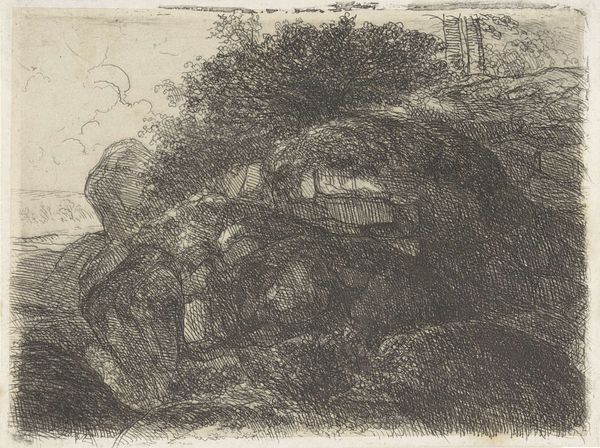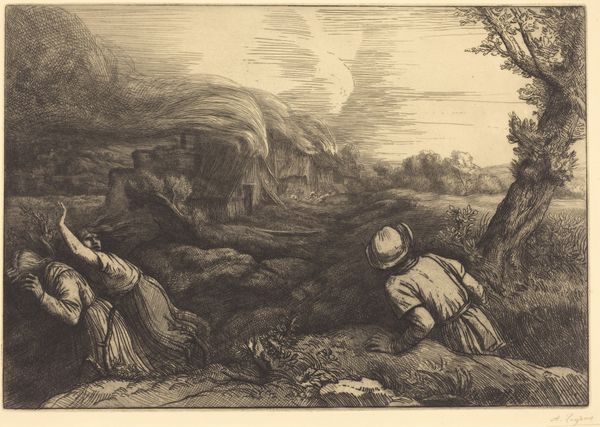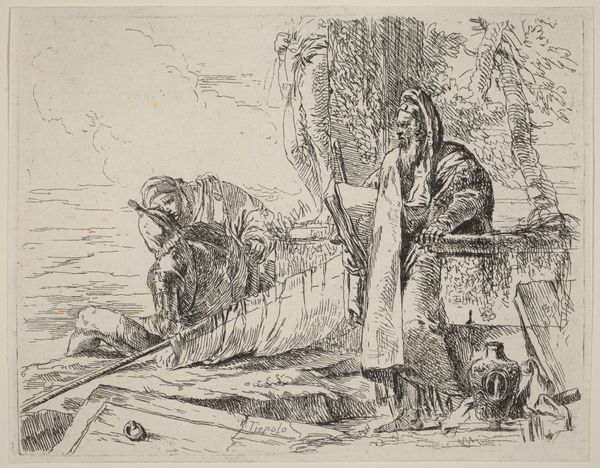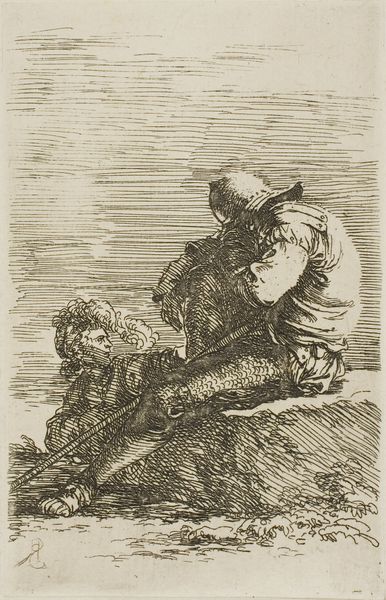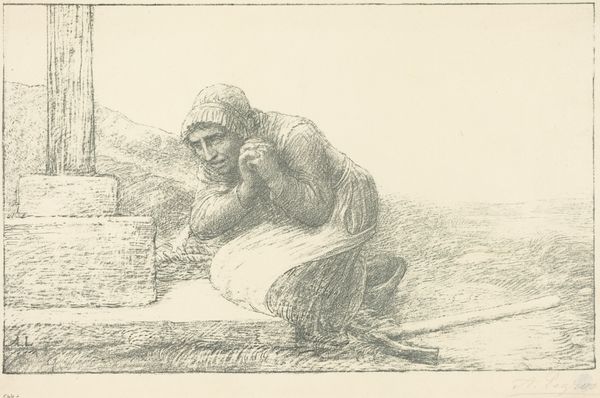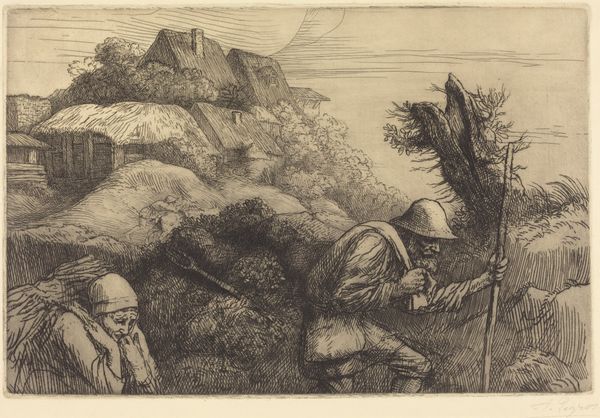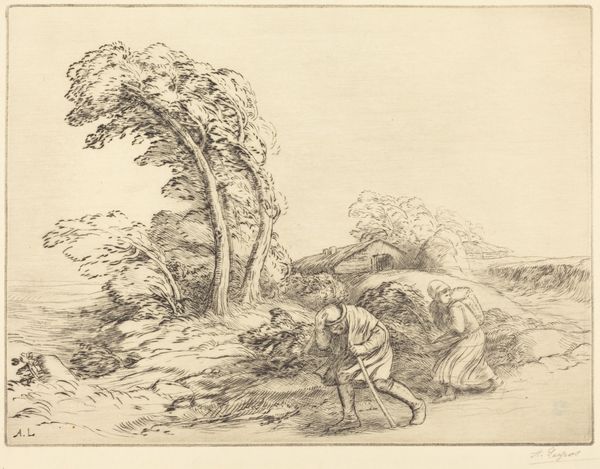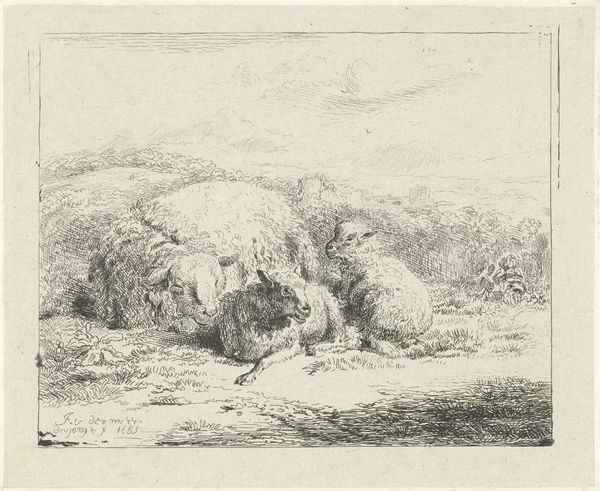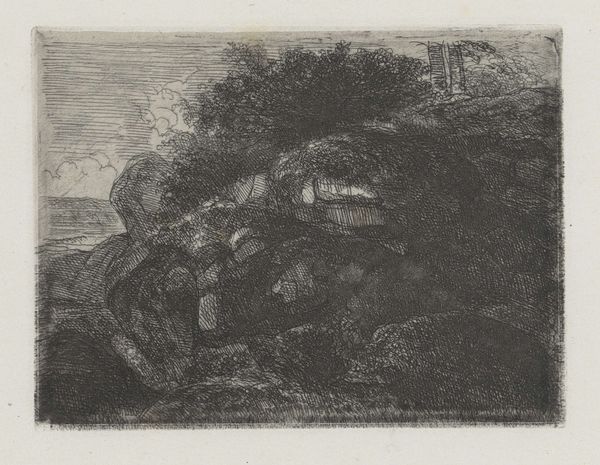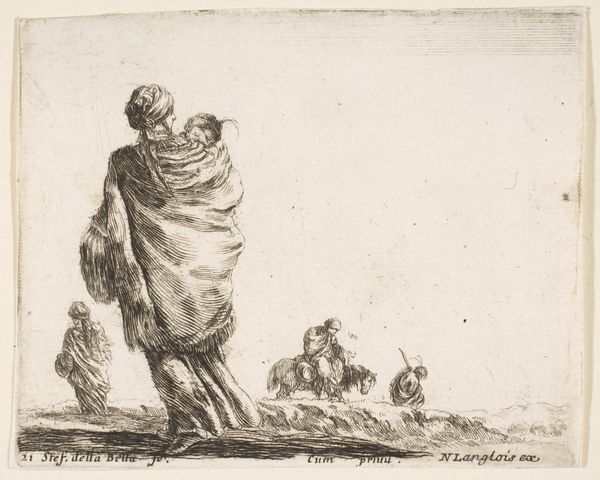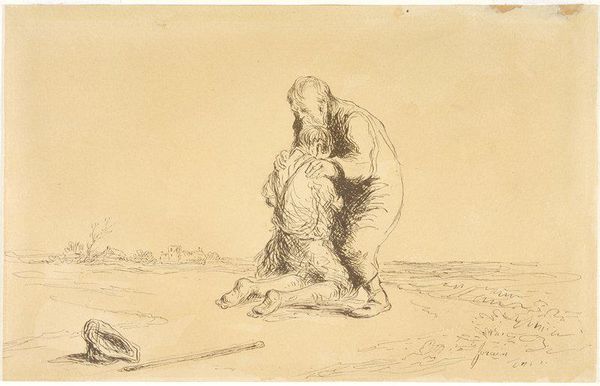
Dimensions: 141 × 270 mm (plate); 142 × 271 mm (sheet)
Copyright: Public Domain
Editor: This etching by Alphonse Legros, titled "A Vagabond Walking Along a Lane," was made around 1890. It's currently housed at the Art Institute of Chicago. I find it melancholic; the figure seems so burdened by something. What do you see in this piece, considering its historical context? Curator: It's fascinating how Legros, a Frenchman working in England, captured a growing social anxiety. This print presents a romanticized, yet poignant view of poverty. Etchings like these gained popularity due to their reproducibility, making art accessible to a broader audience. Consider how images of the "working poor" became a frequent subject of public debate. Editor: So, it's not just about a single vagabond, but speaks to a broader societal issue? Curator: Precisely. These images could serve multiple purposes – elicit charity, incite fear, or even, from an institutional point of view, provide a safe representation of societal inequalities for consumption by wealthier patrons. Notice how Legros' technique – the delicate lines and stark contrasts – contributes to the overall mood. It almost romanticizes the hardship, doesn't it? Editor: It does! So the romanticism highlights, or maybe even obscures, the actual, brutal realities of poverty? Curator: Indeed. And it is precisely in that tension between aesthetics and representation where much of the art-historical meaning resides. Think about the institutional display of such images - what stories do they tell, and perhaps, what do they leave out? Editor: That makes me rethink how I initially viewed it. It's not just a sad picture, but a loaded representation meant for public consumption. Curator: Exactly! Understanding its position within social and cultural narratives adds another layer to the experience.
Comments
No comments
Be the first to comment and join the conversation on the ultimate creative platform.
